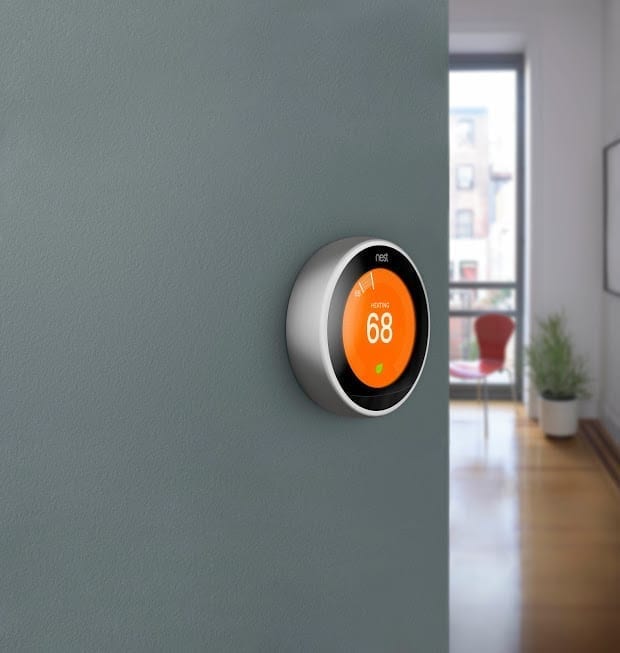
The events of the past year and a half have irrevocably changed the way we live, especially at home. Pandemic-related restrictions and lifestyle changes have greatly increased the amount of time Americans spend at home—at one point, more than 50% of the population spent more than 18 hours in their homes. Rising energy costs and worsening weather patterns caused by climate change have also sprung a new set of challenges on homeowners, and their impacts will only continue to increase in the coming year.
COMMENTARY
These changes are likely here to stay, and the next year will see American homeowners continue to adapt and adjust their lifestyles to meet these new challenges. As we look toward the new year, there are a few changes we predict homeowners will likely make to save energy, reduce energy costs, and increase their safety while at home.
Energy Resiliency is Now a ‘Must’
There has been a fundamental shift in the meaning of home. Weather continues to become more extreme and unpredictable and, as a result, power outages will increase. Several major companies are also switching to permanent remote work, meaning homes must now serve dual-purpose as an office space. This makes home energy resiliency more important than ever before because experiencing power outages while working or schooling from home will greatly impact productivity and, in turn, people’s livelihoods. When faced with adverse weather conditions, such as the Spring ice storms in Texas and the continuing public safety power shutdowns in California to mitigate potential forest fires, it only takes a strong storm or impending wildfire to knock out power for millions and prevent someone from being able to work.
In the coming year, home resiliency will become even more top of mind for homeowners. They’ll look to equip their homes with the resources needed to keep their families safe and the power on during a storm or fire prevention shutdown. Homeowners will seek energy resiliency and access to various energy resources, including solar panels, batteries, and generators, which ensure they always have power regardless of weather conditions or if there’s a strain on the power grid. Additionally, energy resiliency measures will increasingly work as a money-saving option for homeowners who will be able to switch to a more cost-efficient energy source during peak hours when rates for traditional utility power are higher.
The Rise of Connected Devices
The adoption of connected devices has trended upwards for years. With people spending more time at home than ever before, the adoption of smart home devices will only intensify. Add in the impacts of climate change—including greater extremes in temperatures—and homeowners are being forced to use more energy to moderate the climate in their home.
These trends will only continue into 2022 and beyond, and we’ll expect the types of connected devices homeowners adopt to evolve with new challenges they face. With simpler connected devices like smart bulbs and appliances already widely in use, homeowners will begin to flock to devices that can intelligently track and manage home energy use—think thermostats, outlets and energy monitors. These connected devices gather information on real-time energy consumption, providing actionable insights that allow homeowners to adjust energy usage in real time to increase efficiency and prevent surprise bills at the end of the month.
Homeowners will increasingly look to make informed decisions based on which devices consume the most energy. They’ll be able to pinpoint the source of high energy consumption and turn it off, significantly reducing their energy costs and total carbon footprint. For example, a connected device could alert a homeowner that they left their freezer open and running over time or that their HVAC system is consuming more energy than normal, allowing them to react and adjust in real-time.
Home Technology with a Focus on Safety
In the new year we also expect more people to resume traveling—leaving them away from home for longer periods of time than they’ve been used to. Homeowners will look to equip their homes with technology that provides added security while they’re away. From smart home locks that enable homeowners to monitor their front door remotely to energy management devices that provide residential insights and interior security, safety will be top of mind for homeowners.
Homeowners will invest in smart home safety technology, including devices that allow users to turn off an appliance – such as an oven – remotely through the circuit panel. For those with elderly parents or children at home, safety concerns can be eased from a distance by leveraging technology that allows them to check in remotely. Having 24/7 insights into atypical behavior, like an iron left plugged in overnight, allows homeowners to take the safety of more vulnerable family members into their own hands to help prevent potential accidents from occurring.
For those who get caught up in the chaos of traveling, potential safety scares can be avoided with monitoring and control devices. Curling iron still plugged in? Garage door accidentally left open? Many of smart home devices allow the creation of custom notifications and enable homeowners to act against the concern directly from a smartphone app.
Ultimately, the homeowner of 2022 will leverage technology to make smarter decisions when it comes to home energy and safety. The effects of the pandemic will continue to change how people interact with and within their homes—a trend that will continue for the foreseeable future.
—Bradford Wills is Director: Strategic Customers & Programs, for Schneider Electric.
The post Homeowners Learned a Lot in 2021; Here’s What They’re Looking For in 2022 appeared first on POWER Magazine.